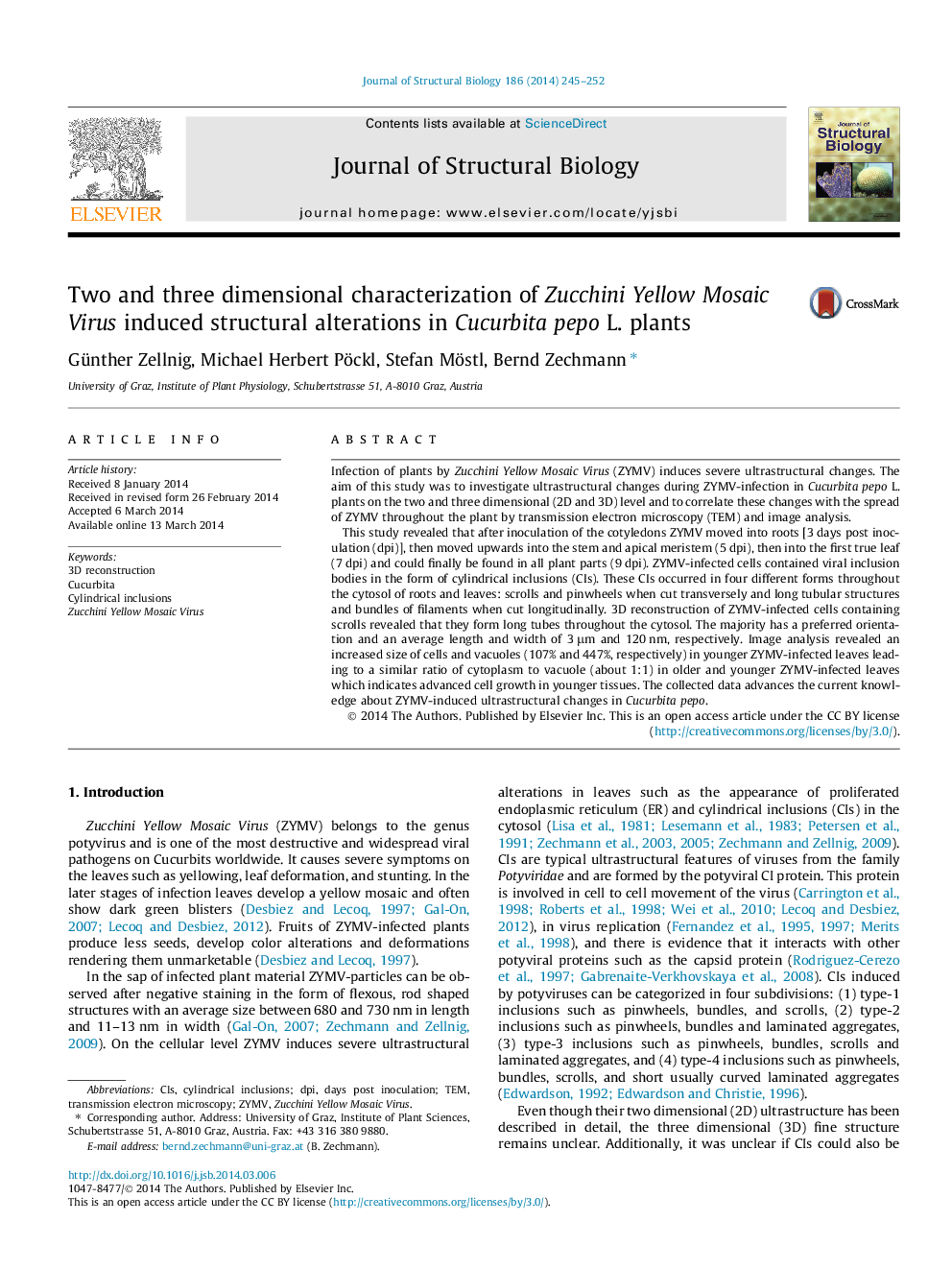| Article ID | Journal | Published Year | Pages | File Type |
|---|---|---|---|---|
| 5914172 | Journal of Structural Biology | 2014 | 8 Pages |
Abstract
This study revealed that after inoculation of the cotyledons ZYMV moved into roots [3 days post inoculation (dpi)], then moved upwards into the stem and apical meristem (5 dpi), then into the first true leaf (7 dpi) and could finally be found in all plant parts (9 dpi). ZYMV-infected cells contained viral inclusion bodies in the form of cylindrical inclusions (CIs). These CIs occurred in four different forms throughout the cytosol of roots and leaves: scrolls and pinwheels when cut transversely and long tubular structures and bundles of filaments when cut longitudinally. 3D reconstruction of ZYMV-infected cells containing scrolls revealed that they form long tubes throughout the cytosol. The majority has a preferred orientation and an average length and width of 3 μm and 120 nm, respectively. Image analysis revealed an increased size of cells and vacuoles (107% and 447%, respectively) in younger ZYMV-infected leaves leading to a similar ratio of cytoplasm to vacuole (about 1:1) in older and younger ZYMV-infected leaves which indicates advanced cell growth in younger tissues. The collected data advances the current knowledge about ZYMV-induced ultrastructural changes in Cucurbita pepo.
Related Topics
Life Sciences
Biochemistry, Genetics and Molecular Biology
Molecular Biology
Authors
Günther Zellnig, Michael Herbert Pöckl, Stefan Möstl, Bernd Zechmann,
